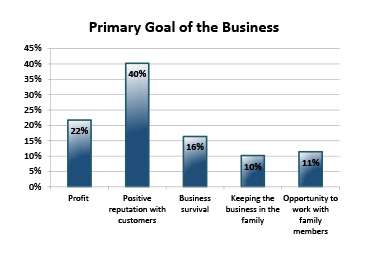“If you don’t know where you are going, you’ll end up someplace else.” – Yogi Berra
No matter what your business does or who it serves, the business (and its employees) need goals and objectives. Yogi Berra sums it up best – you need to have a target or you’ll never make it there. Goals are general and can help to shape where you are going, where objectives should be concise and explain how you will get there. Action plans can subsequently be established to break down each objective into small, manageable projects (normally taking no longer than a week each to complete). Goals and objectives give you something to work towards, complete with timelines and metrics. When defining goals and objectives, make sure that they are SMART – smart, measurable, action-oriented, realistic, and timely. You can set goals, objectives, action plans, and associated timelines and metrics related to personal matters, business matters, professional matters, management succession, and ownership succession.
Example: Differentiating between smart and non-smart goals/objectives
Personal non-smart goal: I want to lose weight.
Personal smart goal: I will lose 20 pounds by the end of the year via eating 5 salads a week and working out for 30 minutes a day, 3 times a week.
Professional non-smart goal: I will grow our business.
Professional smart goal: I will grow the business by acquiring 3 new clients in the next 2 months, by maintaining the current client base, asking clients for referrals, and increasing the business’ social media presence.
Discussing goals takes time; the first goals discussion that you have may just be a fact-finding mission. Be realistic with your expectations; do not expect everyone in the business to have aligned goals. Some individuals may focus more on financial goals such as profit and others may focus on non-financial goals such as family harmony and keeping the business in the family. Farm and family businesses who were interviewed in the 2012 Family Business Succession Survey (FBSS) found that between businesses, the primary goal of the business varied. In Graph 1, it is represented that 40% of businesses responded that a positive reputation with customers was their primary business goal. It is thought that all businesses are profit maximizers, but the graph represents that non-financial goals trump financial goals among farm family businesses.
Even though different ideas of primary business goals may emerge though different perspectives in the farm and family business, try to come to a consensus on 4-5 goals for the business. Be sure to identify the time required to accomplish each task and objective. Set deadlines, both for short-term and long-term goals and place them in order of nearest deadline to stay on track. Tracking your progress can help you to maintain your momentum. Consider using a simple calendar, app on your phone, or reminders on your computer to stay on track. Remember, “If you don’t know where you are going, you’ll end up someplace else.”
References:
Lusk, C. and Marshall, M.I. 2005. How to Use Goals to Achieve Business Success: First Steps for New Entrepreneurs. Purdue Extension Publication ID-726. Purdue University. https://ag.purdue.edu/agecon/fambiz/Documents/how_to_use_goals_achieve_business_success.pdf.
Marshall, M.I. 2004. Defining Your Business Through Goals and Objectives: First Steps for New Entrepreneurs. Purdue Extension Publication ID-727. Purdue University. https://ag.purdue.edu/agecon/fambiz/Documents/defining_your_business_through_goals_and_obejectives.pdf.
Sethi, R. (no date). How to set SMART Goals (and win BIG this year). Accessed at:
https://www.iwillteachyoutoberich.com/blog/smart-objectives/ on January 2
